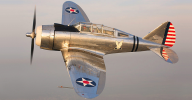My VT-22 check-in brief in 2008 informed me that we may be among the first to select F-35’s. That was off by 7+ years but harriers were pretty cool.Ah, the story of the modern HSC pilot!
-
Please take a moment and update your account profile. If you have an updated account profile with basic information on why you are on Air Warriors it will help other people respond to your posts. How do you update your profile you ask?
Go here:
Edit Account Details and Profile
You are using an out of date browser. It may not display this or other websites correctly.
You should upgrade or use an alternative browser.
You should upgrade or use an alternative browser.
Little known / experimental aircraft
- Thread starter Randy Daytona
- Start date
My VT-22 check-in brief in 2008 informed me that we may be among the first to select F-35’s. That was off by 7+ years but harriers were pretty cool.
"HSC is a growth community!" - VTs and HTs circa 2011-12.
To resurrect the thread on its original topic . . . today I learned that the Kamov Ka-22 "Hoop" was a thing.
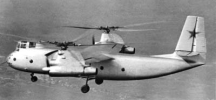
Apparently in the late 50s and early 60s, the Russians decided to try the whole V-22 thing early, except without that pesky fly-by-wire or synchronized rotors thing. So they decided the best solution was to make a giant helo that could also turn itself into a giant autogyro by decoupling the engines from the rotors and switching them to props.
Apparently, they never could work through issues where one rotor would have collective pitch issues, causing the whole thing to snap-roll into the ground.

Apparently in the late 50s and early 60s, the Russians decided to try the whole V-22 thing early, except without that pesky fly-by-wire or synchronized rotors thing. So they decided the best solution was to make a giant helo that could also turn itself into a giant autogyro by decoupling the engines from the rotors and switching them to props.
Apparently, they never could work through issues where one rotor would have collective pitch issues, causing the whole thing to snap-roll into the ground.
Last edited:
The tilt-rotor thing has a fascinating history of its own. Here are a few early US versions...To resurrect the thread on its original topic . . . today I learned that the Kamov Ka-22 "Hoop" was a thing.
View attachment 29820
Apparently in the late 50s and early 60s, the Russians decided to try the whole V-22 thing early, except without that pesky fly-by-wire or synchronized rotors thing. So they decided the best solution was to make a giant helo that could also turn itself into a giant autogyro by decoupling the engines from the rotors and switching them to props.
Apparently, they never could work through issues where one rotor would have collective pitch issues, causing the whole thing to snap-roll into the ground.
The XV-3 could hover, but the transition to forward flight was apparently terrifying.
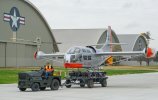
The Doke 16, elbow, actually flew quite well.
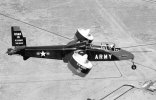
The XC-42 could also fly and was really the “grandfather” of the MV-22.
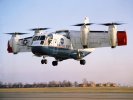
I think all the early designs did.Didn't the XC-42 have a nasty habit of trying to shake itself apart?
The tilt wing also had interesting differences from a tiltrotor. You’re continuously increasing AOA as you decelerate to land, for starters, which is tricky. On the other hand, the wing doesn’t block airflow from the rotor, so there’s a thrust benefit.Didn't the XC-42 have a nasty habit of trying to shake itself apart?
Last edited:
Certainly not a little known plane but this was a really good article in The National Interest on the P-38 that I thought some might like.
 nationalinterest.org
nationalinterest.org
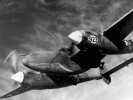
The Army pilots—and Marine pilots flying F4Us who also profited from his instruction—had been taught to fly their airplanes at high propeller rpm and high manifold pressure, which allows maximum power from a turbo-charged engine. Lindbergh told them to continue to fly at high manifold pressure, but to reduce propeller rpm, a technique that significantly reduces fuel consumption while allowing high power from the engines.
The National Interest: Blog

The Army pilots—and Marine pilots flying F4Us who also profited from his instruction—had been taught to fly their airplanes at high propeller rpm and high manifold pressure, which allows maximum power from a turbo-charged engine. Lindbergh told them to continue to fly at high manifold pressure, but to reduce propeller rpm, a technique that significantly reduces fuel consumption while allowing high power from the engines.
Certainly not a little known plane but this was a really good article in The National Interest on the P-38 that I thought some might like.
The National Interest: Blog
nationalinterest.org
View attachment 30128
The Army pilots—and Marine pilots flying F4Us who also profited from his instruction—had been taught to fly their airplanes at high propeller rpm and high manifold pressure, which allows maximum power from a turbo-charged engine. Lindbergh told them to continue to fly at high manifold pressure, but to reduce propeller rpm, a technique that significantly reduces fuel consumption while allowing high power from the engines.
Fun fact I didn't know until recently, the P-38 was the only US fighter in full production from the beginning of the war until the end.
Charles Lindbergh's biography is a worthwhile read too.Lindbergh told them to continue to fly at high manifold pressure, but to reduce propeller rpm, a technique that significantly reduces fuel consumption while allowing high power from the engines.
The long forgotten father of the Republic P-47...the Seversky P-35. Seversky, a Russian immigrant, designed and built his aircraft at a little plant in Farmingdale NY. His aircraft (tested extensively by the Navy) are indicative of how far behind the US was in fighter development in the late 1930’s. While the P-35 could fly higher than almost any other fighter at the time, it was a good 30 mph slower. It eventually lost out the mostly inferior P-40. Still, the P-35 did see some combat early in the war with a U.S. pilot sinking a Japanese minesweeper. During the opening days of the war Seversky lost his control of the company and it was rebranded as Republic Aviation leaning heavily on Seversky designs.
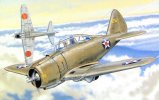

P-35 begat the P-43 that begat the P-47.The long forgotten father of the Republic P-47...the Seversky P-35. Seversky, a Russian immigrant, designed and built his aircraft at a little plant in Farmingdale NY. His aircraft (tested extensively by the Navy) are indicative of how far behind the US was in fighter development in the late 1930’s. While the P-35 could fly higher than almost any other fighter at the time, it was a good 30 mph slower. It eventually lost out the mostly inferior P-40. Still, the P-35 did see some combat early in the war with a U.S. pilot sinking a Japanese minesweeper. During the opening days of the war Seversky lost his control of the company and it was rebranded as Republic Aviation leaning heavily on Seversky designs.
View attachment 30149

